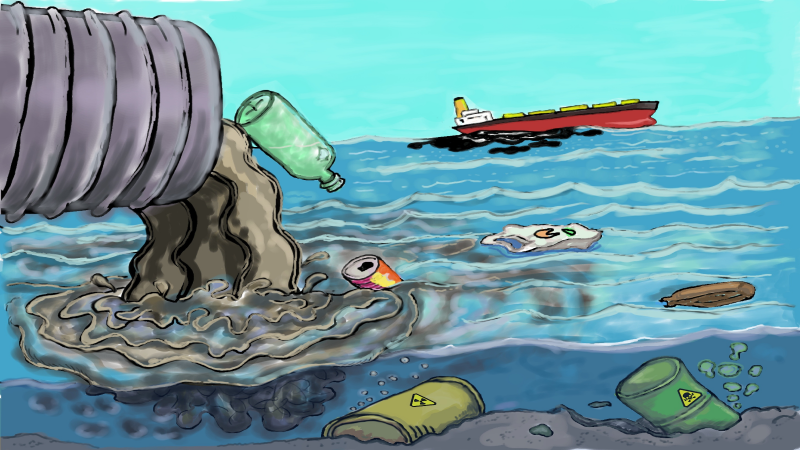
Plastics are stubborn trash and non-biodegradable. Yet, did you know our indiscriminate use of plastics has now permeated our oceans as well?
According to the United Nations, 80% of marine pollution is caused by land-based debris. Our waterways carry tonnes of waste — mainly discarded plastics and industrial waste —into the seas. Apart from that, ships and fishing boats dump discarded cargo, fishing nets and other debris into the sea.
Strong oceanic currents called ‘gyres’ carry the marine litter far away to the centre of the ocean. The whirlpool-like gyre currents churn and swirl the debris, drawing them into their vortex. As a result, nearly 70% of the garbage sinks to the seabed, creating a huge trash vortex at the bottom of the sea.
On the other hand, most plastic waste breaks down into tiny bits or microplastics due to photodegradation (breakdown due to sunlight) and the strong oceanic currents. As a result, millions of microplastics float around the region, turning the waters cloudy. Some bits combine with denser debris and form solid permanent island-like structures that run into several hundred feet in length.
Such accumulating marine debris are forming what are called ‘great marine garbage patches’. There are five gyres in our oceans, and all have growing garbage patches. The largest is the Great Pacific Garbage Patch.
The garbage patches impact the delicate balance of the marine ecosystem. Deep-sea divers have found several rare and exotic marine species dead, entangled in the ‘ghost fishing’ nets. In addition, many marine animals unwittingly ingest microplastics mistaking them for food, even feeding the bits to their young ones, and eventually die of starvation or damaged organs.
Also, the gyres carry the patches over vast distances, possibly transporting invasive species to other ecosystems, thereby disrupting the delicate natural balance. Besides, the garbage patches block the sunlight from reaching planktons and algae — the primary producers in the oceans — thereby threatening their survival. If planktons and algae perish, the entire food web will face ripple effects.
Experts opine that it is almost impossible to clear or clean the garbage patches as they are formed in inaccessible regions and not economically viable. Also, methods to scoop out the plastics can kill millions of organisms present in the waters. Presently, we can only prevent the patches from growing by drastically reducing the garbage that enters the seas.
Editor's Note: A version of this story was published in DH





